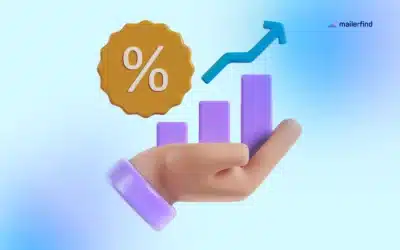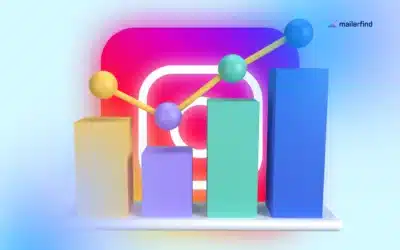The compass of every modern marketer invariably points to a common destination: conversion. It’s an ambitious journey, with a vehicle unlike any other – not a plane, ship, or bus, but a funnel, yes, just as you read.
Just like the conventional definition, the marketing funnel is designed to filter, but in this case, it filters ideal leads to reach the point of conversion. It’s a journey that starts from the first contact with a brand and ends with a successful sale.
Each stage of the funnel is a crucial step in the customer’s journey, which is why it’s essential to understand them thoroughly to implement the best strategies and achieve resounding success. In this article, we aim to give you the keys to what should not be missing in the conversion funnel stages.
From creating awareness to fostering loyalty, the marketing funnel stages are essential for effective communication with your target audience.
Ready? Take a look at our guide.
What is a marketing funnel?
The marketing funnel represents an imaginary filter that reduces a large number of prospects to a few select buyers. But to get there, you need to go through a series of moments, each with its own goals and characteristics.
What are the stages of the marketing funnel?
Awareness Stage
At the top of the funnel, almost at the edge, are the buyers who do not yet know the brand. We’ve just poured them in, so it’s a preliminary phase.
That’s why we define this stage as awareness because the prevailing idea is to create recognition. To achieve this, companies must use different marketing techniques such as social media advertising and content marketing.
The goal is to pique the interest of the target audience and make them interested in what the company has to offer.
It’s time to make your introduction. Put in your best effort because the first potential customers will come from here. The quantity will be proportional to how appealing you present yourself, even though you’re not using sales strategies yet, from the moment you introduce yourself to the market, everything matters.
An effective approach in the awareness stage is to create informative and engaging content that educates and entertains. By providing blog posts, videos, or other media, you position yourself as an industry expert and build trust with viewers.
And since influencers are all the rage, you can also use them, along with branded content with other companies to expand your reach and help build visibility.
The key is to create a positive and lasting impression that will keep the brand in the minds of potential customers as they progress through the marketing funnel.
Visibility and style are essential to grab attention, but more important than that is providing valuable content and a positive brand experience, so don’t overlook that.
Smooth the path for greater engagement in the later stages of the funnel. Invest time and effort in crafting engaging and attention-grabbing messages that elicit interaction, responses to identify their preferences, motivations, obtain their contact information, and then map the buying cycle, discovering valuable information about your audience, especially their buyer’s journey.
With all this information in hand, you can then design the purchase journey for your customers, now with a personalized strategy based on their interests.
Interest Stage
If you’re curious, you’ll reach this stage, and the best thing that can happen is that you encounter a lot of curious people because it means you have your first potential customers. At this point, they have shown genuine interest in the brand or the product and are seeking more information. It takes just a hint of feedback, a question, a greeting, or a direct response about your product.
The goal of this stage is to educate potential customers and show them that the brand is worth it. Go all out. It’s your chance to capture their attention, interact with them using persuasive content, and form a bond that will eventually lead to a sale.
For example, you can provide them with comprehensive information about the product, display customer testimonials, or offer exclusive discounts or promotions. By focusing on their specific needs and aspirations, you can build trust and closeness, bringing them closer to making a decision.
It’s worth investing in “how-to” processes and techniques that can add value to the product or service the company wants to sell. Providing practical guides, pros and cons of products, services, tools, and methods can be effective.
The curiosity stage is also the perfect time to establish your company as a specialist in your niche. So use your blogs, videos, or webinars to position yourself as a reliable source of information.
Infographics work, for example, as they are easy to understand, making them ideal for the education stage.
Podcasts are also highly effective because they not only facilitate more relaxed consumption but also keep the user on your website longer.
Leverage positive reviews or endorsements from influencers to further pique their curiosity and confidence in your services or products, along with newsletters.
Don’t leave room for objection or excuse. Lead them to take the next step.
Evaluation Stage
This stage may take the most time. Leads carefully evaluate their options, assessing your product to decide whether to give the definitive “yes.”
Although we know it’s a high-pressure stage, if you’ve done things right, you can breathe easy, as the purchase is just a matter of time.
However, this doesn’t mean you can sit idle. It’s essential to provide them with the necessary resources to make an informed decision.
For example, you can offer blog articles that directly address the problem’s solution, success stories that can serve as references, discounts to incentivize the purchase, webinars or demonstrations, blog posts, ebooks 📖, personalized emails, whitepapers, videos, infographics, online presentations, and email marketing 💎.
You can include product demos, testimonials, case studies, and detailed product descriptions. By emphasizing your product’s unique selling points and addressing any doubts or concerns, you can encourage customers to choose your product over competitors. Additionally, you can prompt conversion by creating a sense of urgency or offering incentives.
Provide support and offer post-purchase guarantees to address any concerns. Numerous customer relationship management systems, such as Salesforce or Microsoft Dynamics, can track them meticulously, as well as free and highly functional ones like HubSpot and Zoho.
We also suggest using email marketing software. With this type of tool, you can segment and personalize campaigns by stages and profiles, efficiently track contacts and the messages you share with them.
If you’re still undecided about which software to use, we recommend checking out the potential of Mailerfind❤.
Through our data extraction tool, you can obtain all the information you need from your leads.
📮From their emails to their names, geographic location, website, mobile phone number, social media profiles.🖇
Mailerfind not only manages lead extraction but also serves as a complete guide for email marketing.
We offer support and advice to make the most of each stage, measure the spam level of your emails (https://www.mail-tester.com/), provide discounts and special offers, and you can even collaborate with us to earn extra money for your business!
Purchase Stage
Once the type of product or service has been determined, we can start the sales process and turn the user into a customer.
As you approach the final step… a key stage arrives: the purchase. Here, you transition from potential customers to paying customers.
Facilitating user contact with a sales representative can be a determining factor in the purchase (the sales funnel alarm is starting to ring!).
Even if you think it’s unnecessary, keep demonstrating the quality and reliability of the product. The motivation already exists; now you must try to stay one step ahead of the competition and protect what you’ve worked so hard to achieve.
Retention and Loyalty Stage
Once you’ve gained a new customer, the work isn’t over. Good post-sale service is crucial for customer loyalty. Keep your consumers informed about the delivery of their product and thank them for their purchase.
Remember that the process doesn’t end here. To build customer loyalty, it’s necessary to offer good post-sale service.
That’s why we recommend keeping the consumer informed about their product’s delivery, notifying them with an email that their order is on its way, and sending a thank-you email once they’ve received it.
Maintaining customer engagement and encouraging them to return for more is essential. Building strong relationships with customers and providing post-sale support are fundamental for long-term satisfaction and loyalty.
Companies can increase customer satisfaction and loyalty by offering personalized experiences, exclusive offers, and first-class customer service. Furthermore, loyalty programs and rewards can motivate customers to choose your brand over the competition.
Maintaining communication with customers is crucial during the retention and loyalty stage. Regular engagement through various channels like email, social media, and personalized messages is essential so they can stay updated with new products, promotions, and updates.
Finally, the retention and loyalty stage is the perfect opportunity to turn satisfied customers into brand advocates. The goal is to establish a sense of community and make customers feel valued, turning them into enthusiastic brand ambassadors who actively promote the business within their networks.
Encourage them to showcase their purchase on social media by tagging the brand, so the experience can be seen by others and increase visibility and credibility. Your best ally for generating new customers is your existing customers. They are your support, always.
Conclusion
Understanding the stages of the marketing funnel is crucial for companies aiming to effectively reach and convert their target audience. Each stage, from creating awareness to fostering loyalty and advocacy, plays a vital role in guiding potential customers toward a purchase. By implementing strategies tailored to each stage, companies can ensure a smooth and successful customer journey. After all, who wouldn’t want to see their business thrive? 🚀🛒💼🔑




0 Comments